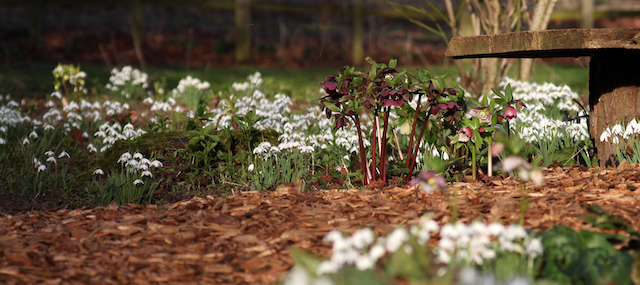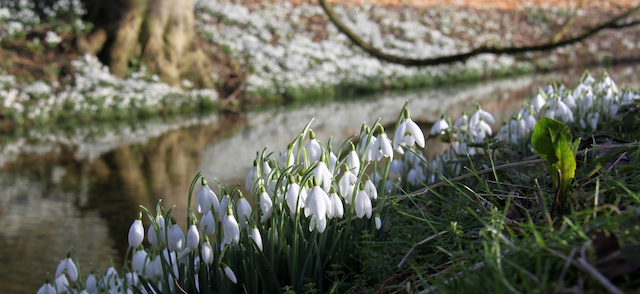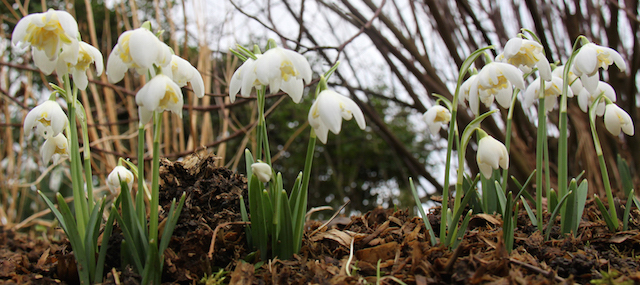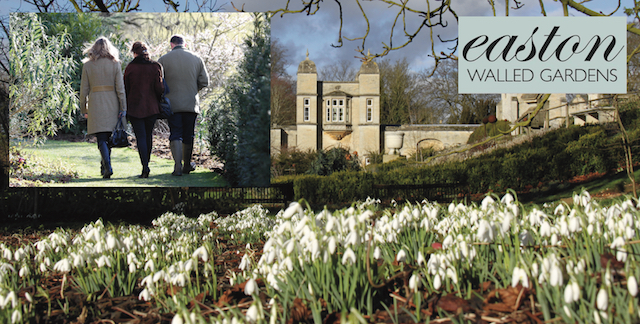Snowdrop Facts
10 interesting snowdrop facts
Snowdrops feature heavily at Easton Walled Gardens from late January until mid March. Around 3,000 people visit us to see the snowdrop display each year.
We get asked a lot of questions about our snowdrops and here are our top 10 favourite answers and facts:
When do snowdrops flower?
- According to the old proverb: “The snowdrop in purest white array, first rears her head on Candlemas Day.” (2 February)

How many species and varieties of snowdrop are there?
- There are 18-19 species of Snowdrops (Galanthus) and more than 500 named varieties.
What do ‘Galanthus’ and ‘Snowdrop’ mean?
- The Species name Galanthus comes from the Greek: ‘Gala’ meaning milk and ‘Anthos’ meaning flower.
- In the 19 century, a Dr. Prior wrote that the common name cannot mean snowdrop since ‘snow is a dry powdery substance that cannot form a drop.’ (Was he also a train spotter in his spare time?)
- It is more likely the name comes from the pearl drop earrings worn by women in the 16th and 17th centuries, as in the painting ‘The Girl with the Pearl Earring’

How to grow snowdrops
- The best way to divide snowdrops is to lift a group every second year as the leaves start to yellow in late spring; split all the bulbs and then plant them separately with a pinch of bonemeal in the hole.
- The flower is formed in the bulb the previous March and waits nearly a whole year before pushing through the soil.
- On a sunny day, snowdrops are highly scented and give off a honey smell. If you have enough plants the perfume will fill the garden. Mix them with crocus, aconites and cyclamen coum for a colourful display.
Life saving properties
- Snowdrops contain their own anti-freeze proteins. Snowdrop plants were harvested during the First World War to make anti-freeze for tanks.

Collecting snowdrops
- Snowdrop collectors and enthusiasts are called ‘Galanthophiles’ not to be confused with Snowdropping which is an entirely different type of fetish (apparently.)
- Such is their enthusiasm that a single bulb Galanthus plicatus ‘Golden Fleece’ sold on ebay for £1,390 last year. The bulb had taken Joe Sharman 10 years to develop and was a record price for a snowdrop.
For more information on our open days please see our snowdrop pages on the main website.
